See our website for more detailed photos: LINK
We send this article worldwide, professionally packaged, with registered and fully insured shipping at a fair price.
This elegant pair of Empire period ewers is attributed to the esteemed bronzier Claude Galle (1759–1815), one of the leading figures in early 19th-century French decorative arts. Crafted in a sophisticated combination of patinated and gilt bronze, with plinths of richly veined rouge griotte marble, these pieces reflect the refined aesthetic of the period.
Each ewer features a tapering ovoid body, adorned with a frieze of winged sea-horses and a classical mask which is an iconography likely referencing Apollo. The neck rises to an everted spout, flanked by a sculptural handle in the form of a winged griffin, a motif frequently employed by Galle in his designs. The circular bases are decorated with cast oak leaves and rest on square marble plinths, lending visual weight and balance to the composition.
Closely related examples of this model are held in museum collections, including the Württemberg Landesmuseum in Stuttgart and the Palace of Pavlovsk in St. Petersburg. The present pair aligns with Galle’s characteristic design language, combining mythological symbolism with finely executed bronze work and harmonious form.
This pair is in excellent condition, retaining its original mercury gilding and patina.
Origin: France, Empire period circa 1810.
Dimensions: Height 38 cm (15″), Width 11 cm (4.3″). Base diameter: 7 cm (2.8″).
Literature



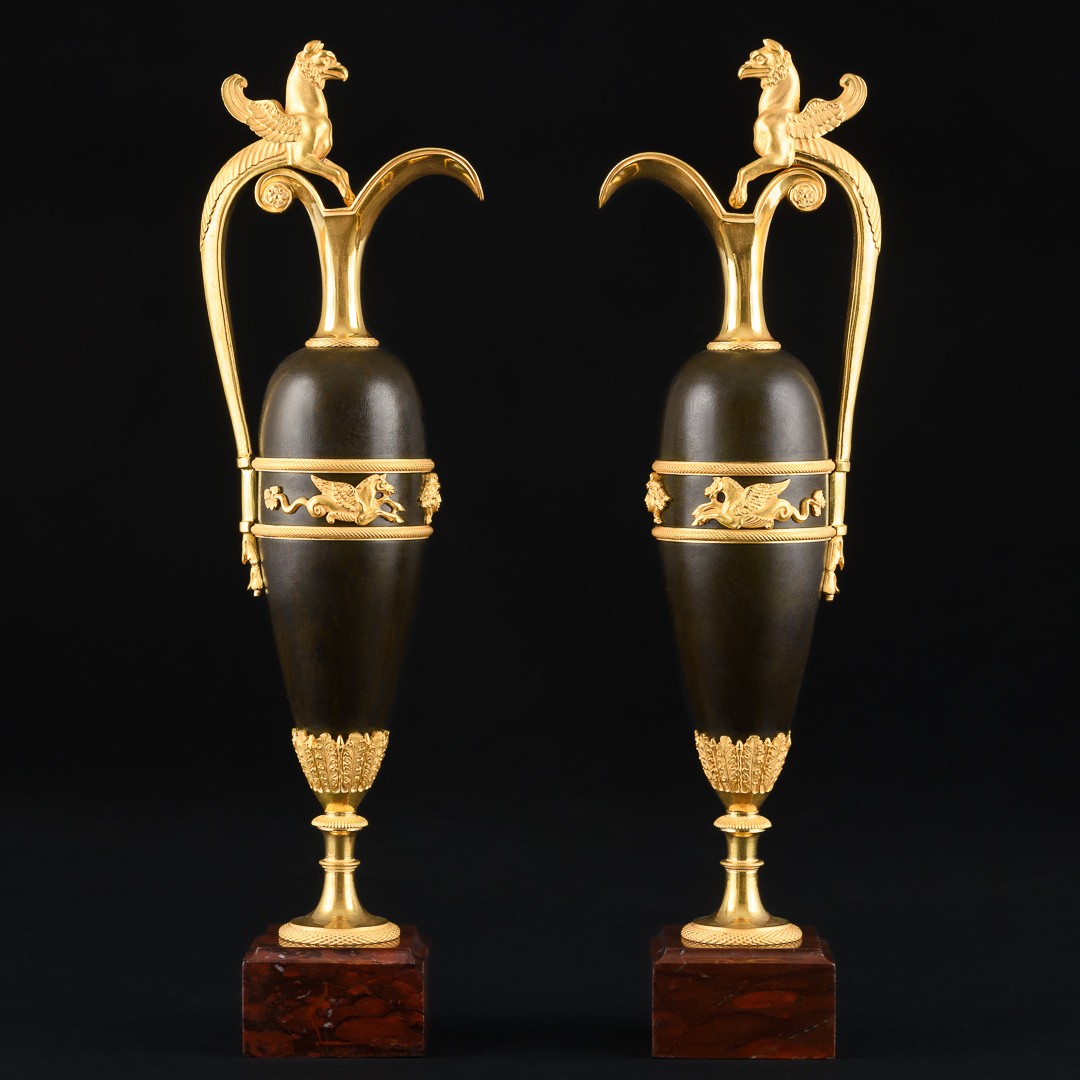





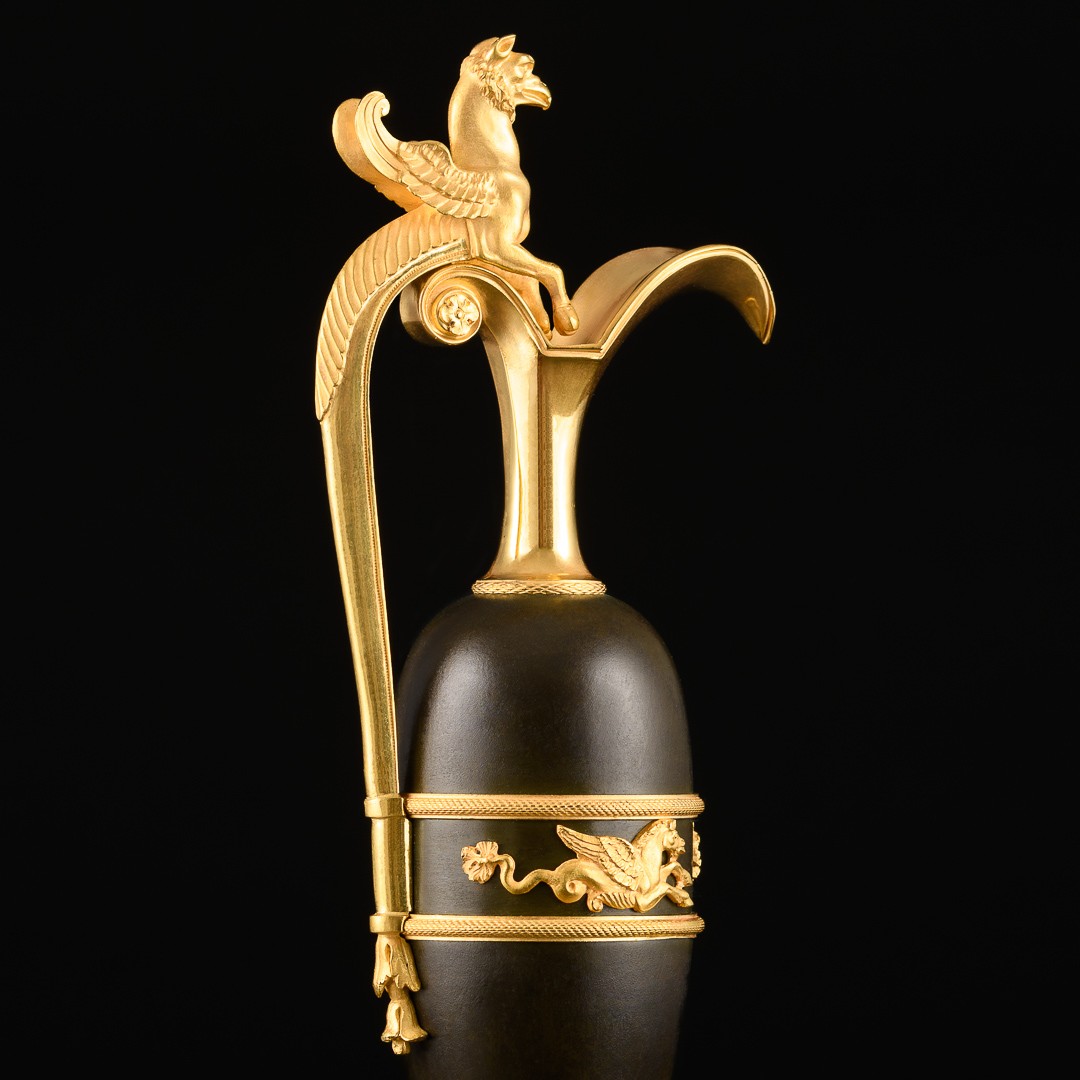
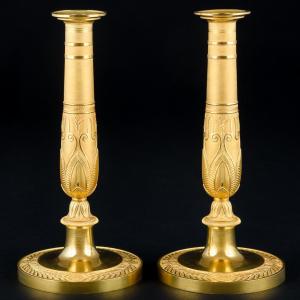


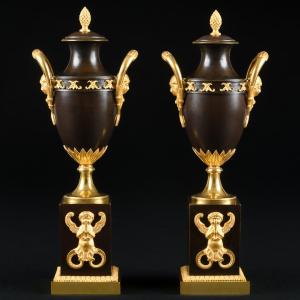

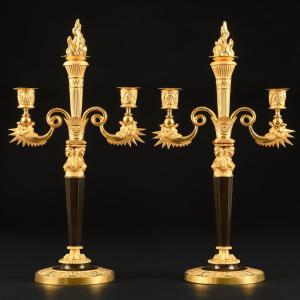
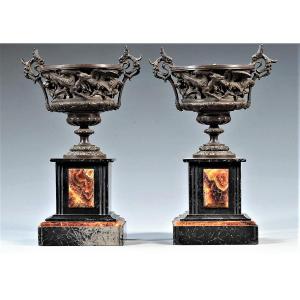

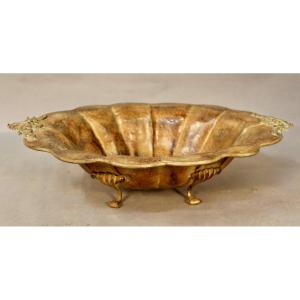






 Le Magazine de PROANTIC
Le Magazine de PROANTIC TRÉSORS Magazine
TRÉSORS Magazine Rivista Artiquariato
Rivista Artiquariato
